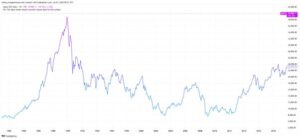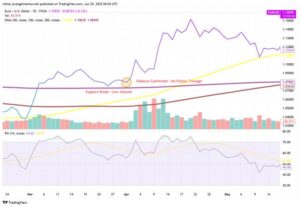Yale senior fellow Stephen Roach has warned that global markets are facing significant volatility risks, driven by the escalating conflict in the Middle East and rising unemployment in the United States. Roach pointed out that investors are currently in a highly uncertain environment, with the Middle East tensions adding to inflationary pressures just as central banks around the world are starting to ease monetary policies, leading to heightened market fluctuations.
Impact of Middle East Conflict on Markets
Tensions in the Middle East escalated in October as Iran launched ballistic missile strikes on Israel in retaliation for the killing of Hezbollah leader Hassan Nasrallah and an Iranian commander. In response, the Israeli Defense Forces (IDF) launched further strikes on Hezbollah targets in Lebanon. This escalation has raised concerns about the potential disruption of global oil supplies, sending shockwaves through the financial markets.
Roach noted that the conflict in the Middle East is putting upward pressure on oil prices, which could, in turn, fuel inflation. Iran, the third-largest producer in the Organization of the Petroleum Exporting Countries (OPEC), produces nearly 4 million barrels of oil per day. Following the missile attacks, oil prices initially surged by 5%, later easing to a 2% increase. Analysts believe that if tensions in the region continue to rise, oil prices could see further gains, which would have a larger impact on global markets.
Increasing Market Volatility
Kelvin Tay, chief investment officer at UBS Global Wealth Management, highlighted that future market volatility largely depends on Israel's response to Iran’s attack. If Israel's retaliation remains measured and avoids large-scale casualties and destruction, tensions in the Middle East could stabilize, preventing a full-blown panic in global markets. However, if the conflict escalates, investors should brace for increased market volatility.
Roach also warned that the inflationary risks from higher oil prices could force central banks to reconsider their current path of monetary easing. The U.S. Federal Reserve, for example, is expected to cut interest rates by another 50 basis points before the end of 2024. However, if inflation continues to rise due to higher energy costs, further easing could be delayed.
Concerns About the U.S. Job Market
Alongside the Middle East conflict, the U.S. labor market is another area of concern for investors. The upcoming October jobs report is expected to show that the U.S. unemployment rate remains at 4.2%, unchanged from August, but still close to the three-year high of 4.3% recorded in July. Since the unemployment rate dropped to a 50-year low of 3.4% in April 2023, it has steadily risen.
If U.S. unemployment figures come in higher than expected, it could prompt the Federal Reserve to accelerate its monetary easing efforts to achieve a "soft landing" — where inflation is brought down without pushing the economy into recession.
Other Factors Affecting the Market
Another factor contributing to potential market volatility is the ongoing dockworker strikes along the U.S. East and Gulf coasts. These large-scale strikes, over wage disputes and concerns about automation, are disrupting global supply chains and have halted nearly half of the country’s ocean shipping, according to Reuters.
Peter Tirschwell of S&P Global Market Intelligence warned that any port shutdown or prolonged work stoppage could have a significant economic impact. He added that the longer the strikes continue, the quicker the economic damage will accumulate, potentially exacerbating global supply chain issues.
Conclusion
Global markets are currently facing multiple challenges, including rising oil prices due to the Middle East conflict, increasing U.S. unemployment, and supply chain disruptions. For forex market investors, closely monitoring these developments will be essential. As market volatility increases, investors will need to adapt to these uncertainties and seek potential opportunities within the forex market.





